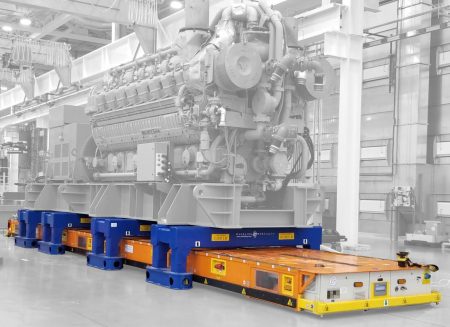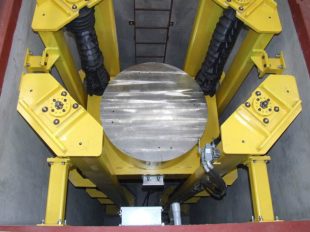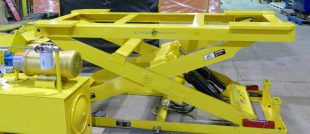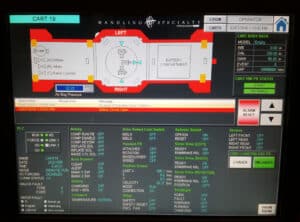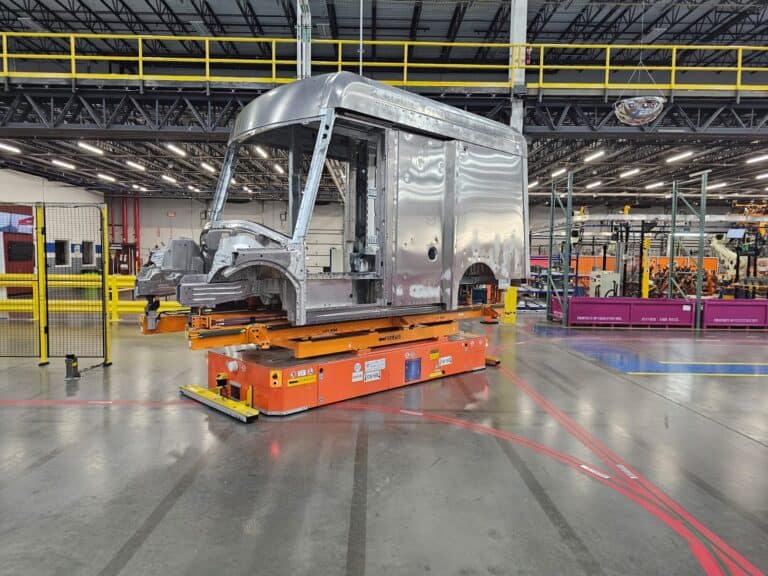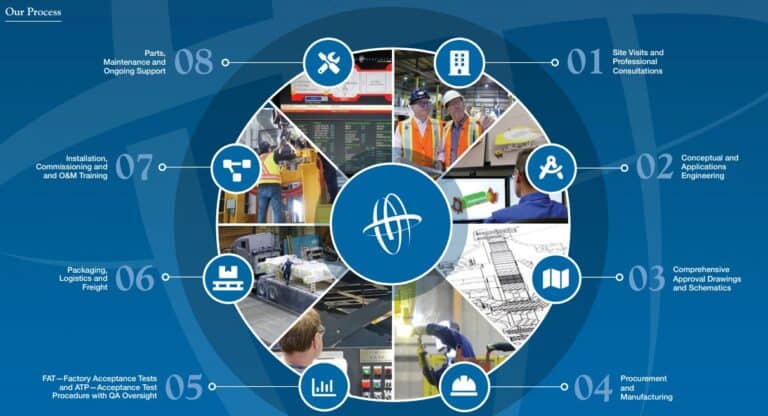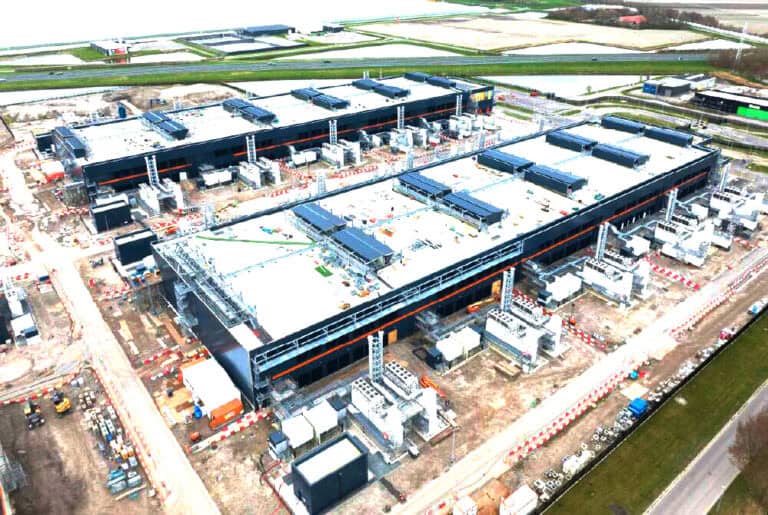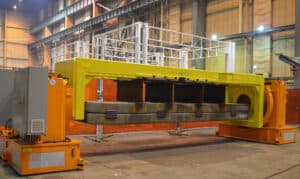Automated Guided Vehicles in Automotive Assembly
Considering AGVs for your Automotive Assembly? Get the key insights before deciding.
An Automated Guided Vehicle (AGV) system, also referred to as autonomous guided vehicles, self-guided vehicles, automated guided carts, or mobile robots, are customizable material handling systems that transport goods or materials within a controlled environment without the need for a human operator or driver. They are often employed in manufacturing facilities and assembly plants. This article delves into the best AGV for automotive assembly processes, how they work, and their benefits in the automotive sector.
Work-in-Process (WIP) Applications
In automotive manufacturing environments, automation solutions such as AGVs are used in the movement of partially completed goods through different stages of production. They transport materials through production lines or between workstations, optimizing the flow of goods through the manufacturing process. This continuous movement is vital for maintaining a smooth and uninterrupted production process, thereby increasing productivity and reducing the likelihood of production downtime.
Automated Guided Carts (AGCs)
Guided carts or AGCs are the simplest form of AGVs that typically follow predefined paths or magnetic tracks. They are often used for transporting components or parts on assembly lines, or for carrying tools, waste, and equipment. Like AGVs, they can be fitted with custom tooling for specific applications.
Best Automated Guided Vehicles for Automotive Assembly
AGV technology has evolved to meet the growing demands of modern material handling and manufacturing operations. There are several types of AGVs, each designed for specific use cases, environments, and payload requirements. Discover the best AGV vehicle type and its applications below for automotive assembly:
Assembly Line AGVs are tailored for supporting flexible, automated production lines. These vehicles deliver subassemblies to precise locations along the assembly line, synchronized with production schedules. They can be programmed for precise timing and sequencing, include navigation technologies, reducing bottlenecks and enhancing workflow continuity. Assembly line AGVs are widely used in automotive manufacturing. The units can be customized to include specific tooling to suit any product such as scissor lifts, rotators, turn tables, roller balls and more.
Benefits of AGV
Autonomous guided vehicles are revolutionizing material handling and logistics by delivering measurable benefits that drive competitive advantage and manufacturing excellence. Here’s how AGV systems can transform your operation:
Enhanced Efficiency: AGVs automate repetitive transport tasks, enabling continuous 24/7 operations. Automated routing algorithms reduce travel distances and idle time, accelerating assembly operations and reducing operational bottlenecks.
Workplace Safety: Built-in safety features like vision sensors, collision avoidance systems, navigation systems and safety controls prevent collisions, safeguarding employees and equipment. By reducing the need for manual forklifts or carts, AGVs minimize workplace accidents and ergonomic injuries.
Space Optimization: AGVs navigate tight spaces, narrow aisles, and high-density storage layouts with precision. This allows for more efficient use of floor space and supports high-density assembly line designs.
Operational Flexibility: AGVs can be reprogrammed for new tasks or routes as business needs change. Their modularity supports assembly process reengineering and workflow optimization, making businesses more agile and responsive. AGVs also come with custom fixtures and tooling integration to support welding technologies along the assembly line.
Cost Reduction: AGV systems reduce labor dependency and associated costs (wages, training, insurance). Lower maintenance requirements compared to combustion-powered vehicles further decrease total cost of ownership. Efficient battery management also contributes to energy savings along with regenerative braking. Predictive maintenance (IIoT 4.0) is another way AGV technologies can assist in bringing costs down, discovering issues before they can lead to down time.
Environmental Sustainability: Electric AGVs operate with zero direct emissions, supporting green initiatives and regulatory compliance. By replacing diesel or gas-powered vehicles, AGVs help companies achieve sustainability targets and reduce their carbon footprint.
What are the Applications of Automated Guided Vehicles in the Automotive Sector?
Automated Guided Vehicles are transforming the automotive industry by automating material movement, boosting productivity, and enhancing accuracy. Key AGV use cases include Heavy-duty AGVs that move engines, chassis, and other large components between production cells. Laser navigation improves safety and throughput in high-volume automotive plants.
AGVs – The key to modular production in automotive manufacturing
Modular manufacturing and autonomous solutions will drive the automotive factory of the future, here’s how: The first assembly line revolutionized the automotive industry, enabling the mass production of standardized products. However, today’s automotive manufacturers are dealing with greater complexity and variation, pushing the limits of the conventional assembly line.
This is increasingly the case as automotive manufacturers expand the production of electrified powertrains alongside the manufacture of traditional vehicles, resulting in bottlenecks, reduced productivity and increased costs.
To respond to this challenge, many automotive manufacturers are looking to move towards more flexible, modular manufacturing material handling systems. This move is enabled by new advances in automation technology in AGV systems – allowing manufacturers to improve efficiency while reducing waste.
Flexible, modular automotive manufacturing – What is it?
The concept of modular manufacturing seeks to utilize workstations in a set sequence to allow products to be produced most efficiently.
This aligns with lean techniques and centers around optimizing continuous production flow from one cell to another whilst supporting product variation.
Types of Automated Guided Vehicles
AGV technology has evolved to meet the growing demands of modern material handling, logistics, and manufacturing operations. There are several types of AGVs, each designed for specific use cases, environments, and payload requirements.
Assembly Line AGVs are tailored for supporting flexible, automated production lines. These vehicles deliver components, tools, or subassemblies to precise locations along the assembly line, synchronized with production schedules often following magnetic strips laid out on the floor. They can be programmed for precise timing and sequencing, reducing bottlenecks and enhancing workflow continuity. Assembly line AGVs are widely used in automotive, electronics, and appliance manufacturing.
Fundamentals of Automated Guided Vehicles
Automated Guided Vehicles (AGVs) are revolutionizing the manufacturing flow, becoming increasingly popular in modern-day assembly and manufacturing. From assembling products to efficiently transporting pallets around a facility, custom AGVs are tailored to each organization’s needs.
In recent years, automated guided vehicles have become smarter and as a result, have emerged as an invaluable tool in complex industrial environments by autonomously moving materials with minimal human intervention. As a result, AGVs have been benefiting organizations across a wide range of industries.
Consequently, the AGV market is projected to grow to $3.3 billion by 2028 a substantial leap from the 2.4 billion recorded in 2023.
AGVs are used in the automotive industry in the following areas:
- Chassis lines, automotive subassembly
- Engine block and gear box assembly lines,
- Final assembly and trim manufacturing processes,
- Just-in-time parts and painting processes
- Pre-production staging
AGV Manufacturers | AGV Suppliers | Automatic Guided Vehicles
The AGV has a rich history dating back to the 1950s when the first AGV was developed. Since then, AGVs have undergone tremendous transformations, including technological advancements that have revolutionized industries such as automotive assembly. Today, AGVs are a crucial component of manufacturing facilities used to enhance efficiency and productivity.
Pro Tip: Discovering an AGV manufacturer with decades of experience in multiple industries like Handling Specialty Manufacturing Ltd. will offer your automotive assembly facility the knowledge to take your facility to the next level of safety and efficiency.

